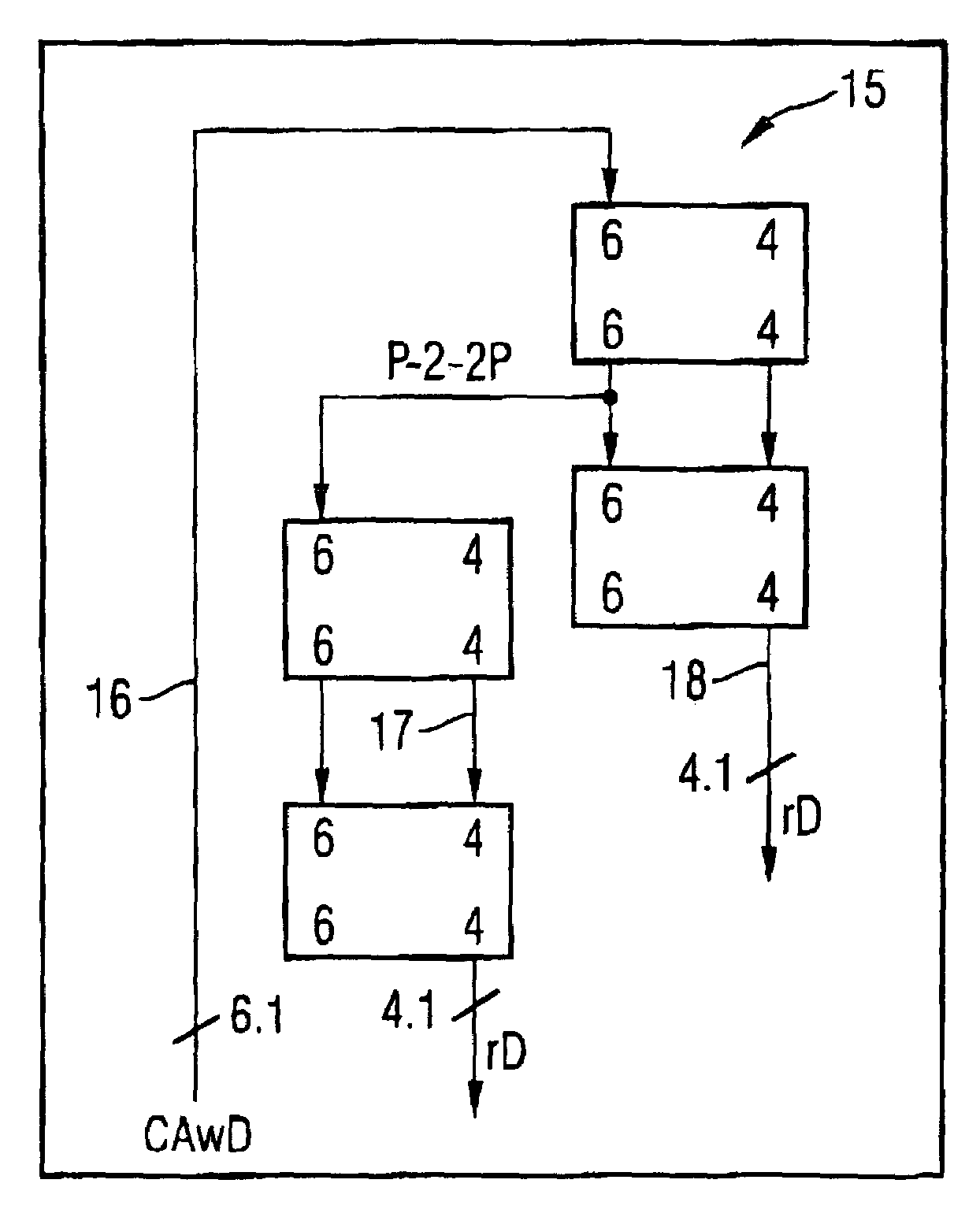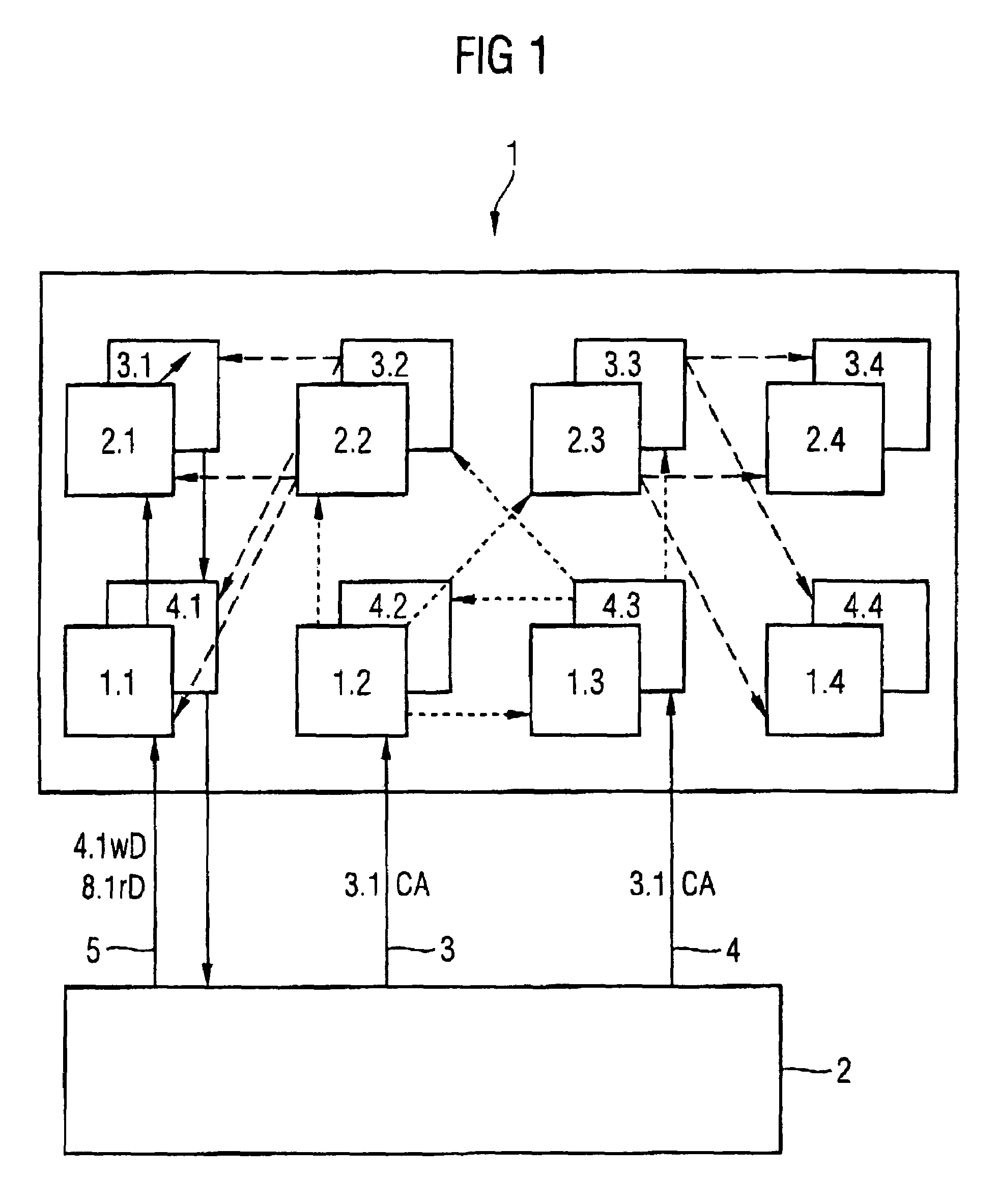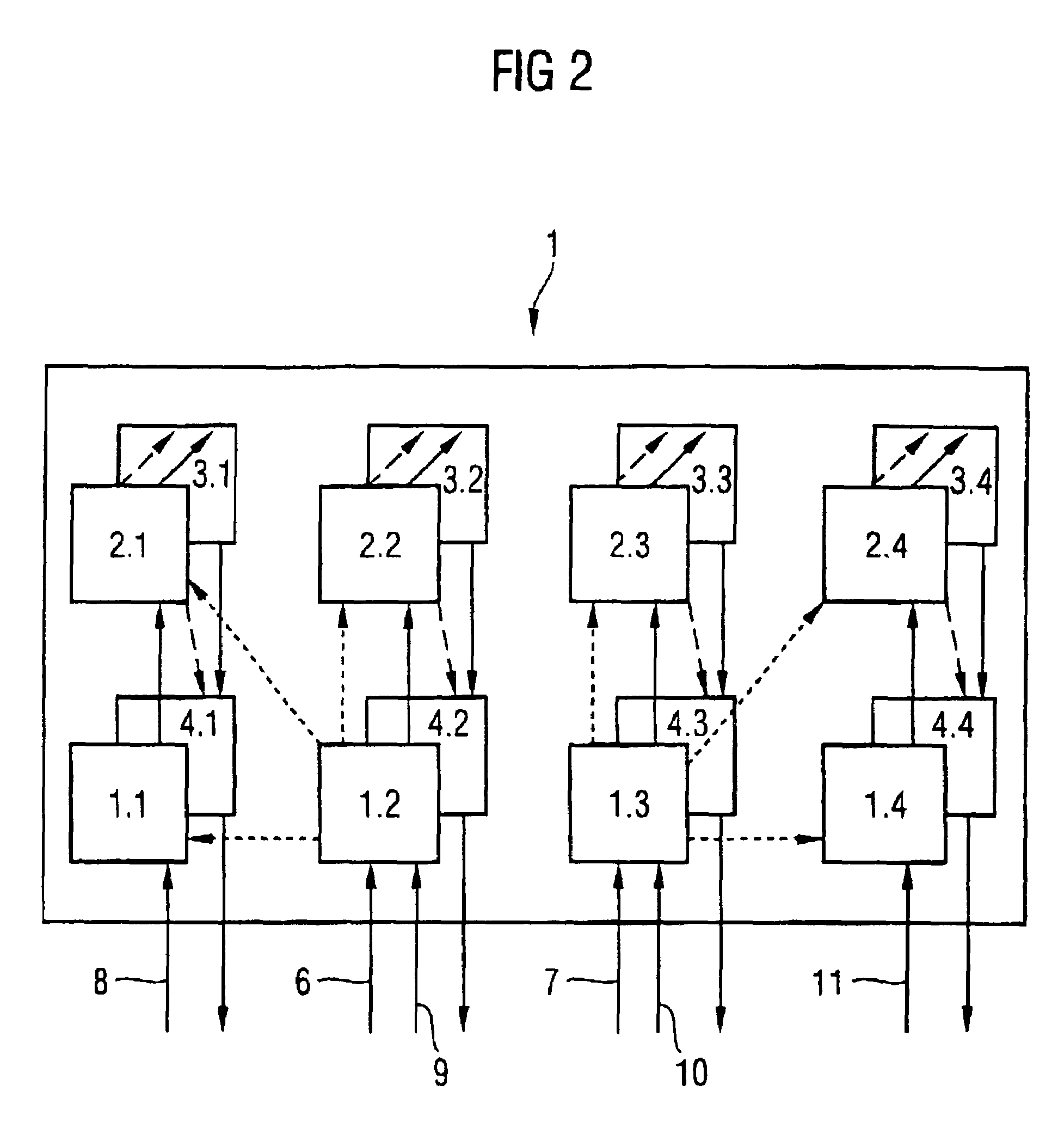Semiconductor memory arrangement with branched control and address bus
a memory controller and branched control technology, applied in the field of semiconductor memory, can solve the problems of too narrow bandwidth for high data rates of 1.6 gbit/s/pin, too low structural density, etc., and achieve the effect of reducing the latency time of re-driving control and address data of memory controllers
- Summary
- Abstract
- Description
- Claims
- Application Information
AI Technical Summary
Benefits of technology
Problems solved by technology
Method used
Image
Examples
Embodiment Construction
[0026]Referring to FIG. 1, the signal line bus topology in an embodiment of the semiconductor memory arrangement according to the invention is shown schematically. Accordingly, on a x4-based DIMM semiconductor memory module, identified by reference number 1, 8 DRAM memory chips 2 are provided on a front side and 8 DRAM memory chips on a back side of the semiconductor memory module. DRAMs 1.1, 1.2, 1.3, 1.4 allocated to a first rank and DRAMs 2.1, 2.2, 2.3, 2.4 allocated to a second rank are arranged on the front side of the DIMM module 1. DRAMs 3.1, 3.2, 3.3, 3.4 allocated to a third rank and DRAMs 4.1, 4.2, 4.3, 4.4 allocated to a fourth rank are arranged on the back side of the DIMM module 1.
[0027]The DIMM module 1 is connected to a memory controller 2 by a first uni-directional signal line bus 3 for control and address signals, a second uni-directional signal line bus 4 for control and address signals, and four unidirectional combined signal line busses 5 for write and read data ...
PUM
 Login to View More
Login to View More Abstract
Description
Claims
Application Information
 Login to View More
Login to View More - R&D
- Intellectual Property
- Life Sciences
- Materials
- Tech Scout
- Unparalleled Data Quality
- Higher Quality Content
- 60% Fewer Hallucinations
Browse by: Latest US Patents, China's latest patents, Technical Efficacy Thesaurus, Application Domain, Technology Topic, Popular Technical Reports.
© 2025 PatSnap. All rights reserved.Legal|Privacy policy|Modern Slavery Act Transparency Statement|Sitemap|About US| Contact US: help@patsnap.com



